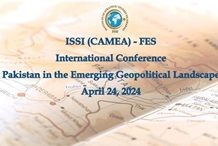Consolidating the existing relationship
To maintain a durable peace in Asia-Pacific, Sino-Indian normalcy must be maintained and sustained. Both countries have serious territorial disputes since the 1962 border clash. India also objects the conclusion of the Sino-Pakistan border agreement of 1963. China and India have a 4000 long Line of Actual Control (LAC).
Peace and tranquillity is a prerequisite for progress in bilateral relations, as recognized by Prime Minister Dr Manmohan Singh. He paid an official three-day visit to China on 23-25 October. The singing of the Border Defense Cooperation Agreement (BDCA) is a landmark development between them to resolve territorial disputes. It is a positive development between the two nations.
It means that border situation is under their mutual control now and skirmishes that often took place can be avoided. This is the major outcome of Prime Minister Singh’s visit to Beijing. If a mechanism for border disputes could be evolved, there is a possibility of resolving the issue of Tibet between them too. The Tibetan spiritual leader, the Dalai Lama, has been living in India since the failed rebellion in 1959. India encourages Tibetan independence.
However, now India has been lowering down its tension with China, building strong relations with Russia and the United States. Indian cooperation is going well ahead with Japan, Australia, and ASEAN countries. India also must improve its ties with Pakistan to get an access to Afghanistan and Central Asia in the foreseeable future and must avoid confrontation in Afghanistan after US drawdown in 2014. It must not use Afghanistan as a launching pad for terrorists’ activities inside Pakistan.
It is, however, essential to lower down the temperature between China and India. They must come to the negotiating table to resolve territorial disputes. The recently concluded visit of Indian Prime Minister Singh to Beijing and meetings with Chinese Premier Li Keqiang and President Xi Jinping has greatly paved the way for a negotiated settlement of disputes between the two nations. Both sides concluded as many as nine agreements to promote bilateral relations and resolve disputes, which is a good starting point between them. Both will also go for defense cooperation. The visit has rewritten history of bilateral consultations between the two populated nations.
The success of the China-Pakistan Economic Corridor (CPEC) also greatly depends on the normalization and bolstering of ties between China and India. As many CPEC’s projects will not only boost Sino-Pakistan bilateral relations, they will serve the larger regional interests up to Central Asia, Afghanistan, Gulf, and Iran. So a smooth Sino-India relationship will pave the way for a close coordination for these projects among many stakeholders. Pakistan must see the development of Sino-Indian relations from this important perspective. So the visit of Prime Minister Singh to China is a not a matter of concern for Pakistan but supplements Pakistan’s interests too.
The idea of the BCIM Economic Corridor, which encompasses Bangladesh, China, India and industrial zone in the region, would be another diversion of China’s Silk Road diplomacy and trade. By cooperating both with Pakistan and India on such projects, it seems that China has been trying to balance its relations in the region. India also needs to appreciate the CPEC instead of objecting the construction of roads and railways network connecting Gwadar Port to Kashgar in western China. India could also be benefited from the construction of the CPEC.
China and India coordinate in many regional organizations such as the Association of South East Asian Nations (ASEAN), ASEAN-Regional Forum (ARF), Shanghai Cooperation Organizations (SCO), Asia-Pacific Economic Cooperation (APEC), East Asia Summit (EAS), Group of 20 (G-20), South Asia Association for Regional Cooperation (SAARC), and Brazil, Russia, India, China, and South Africa (BRICS) organization.
Pakistan also has enormous stakes in many of these organizations. This will lower down Pakistan-India mutual tensions. China needs to actively participate in regional organizations to help improve relations between the two traditional adversaries.
Relations between China and Pakistan have reached new heights under the new Chinese leadership and two high-level exchanges have been made since May. In this perspective, Indian interaction with new Chinese leadership is meaningful. China has more trade with India than any other South Asian country. China is now determined to investment in multiple areas in Pakistan which will also benefit India. Prime Minister Singh’s visit to Beijing must be seen in this context too. He has also been inviting Chinese investment into India.
China-India ties have a global strategic importance and they must improve to maintain order and peace in the world. India should not be used by any power to counterweight and contain China. If done so, this would affect the fabric of the Sino-Indian relations and jeopardize mutual ties between then. In return, this would further complicate Pakistan-India ties.
The vitality of the Sino-Indian economic dynamics needs to understand. China is an important trading partner of India. The two-way trade has increased to over US$ 67 billion last year. India’s deficit, however, is soaring to US$28 billion with China. Both countries have been determined to enhance their two-way trade to US$100 billion by 2015. China’s outbound investment in India would make the economic relationship stronger.
Indeed Prime Minister Singh’s visit to China sent a powerful and meaningful message to the world. The visit has built mutual trust and practically consolidated their existing ties. It is a great success in many years. The visit has presented a big picture of emerging understanding between the two giants. Both countries have shown that they are committed to work closely in future.
Views expressed are of the author and do not necessarily reflect the views of ISS or of the Government of Pakistan.












